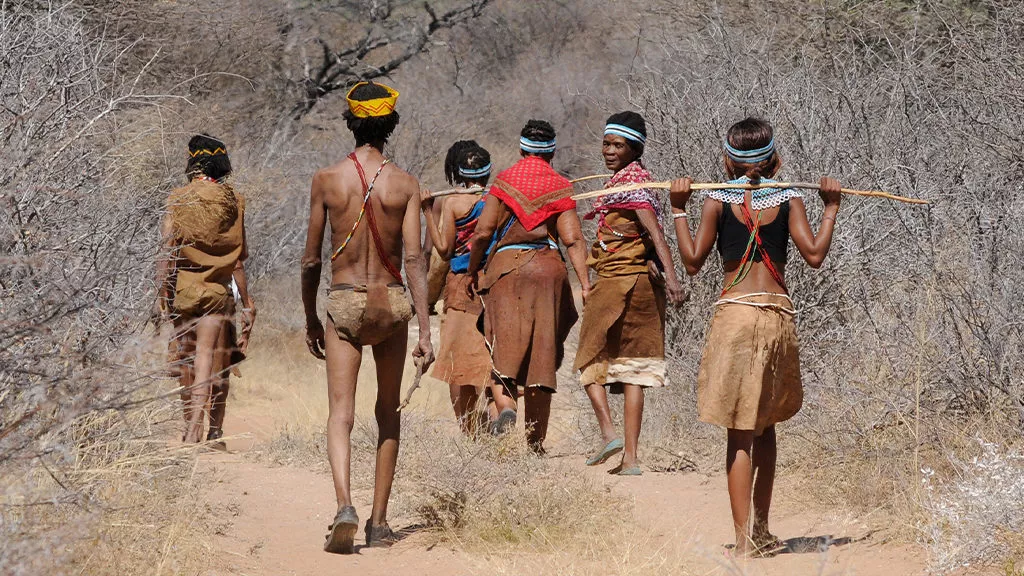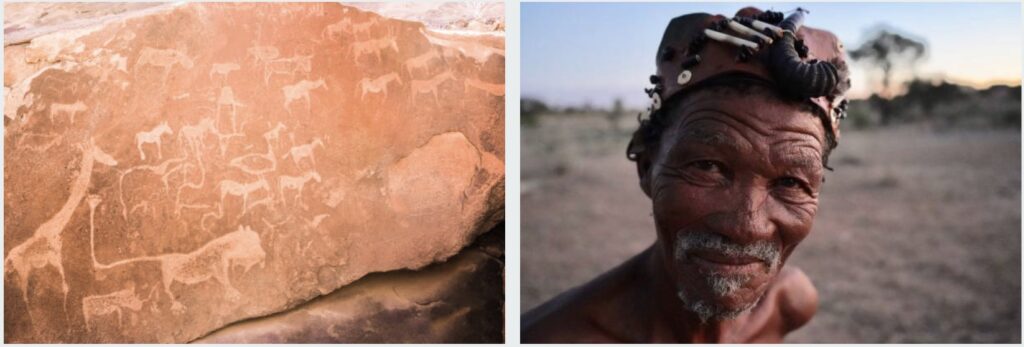10 Differences Between San and Khoikhoi

10 Differences Between San and Khoikhoi:
The San and Khoikhoi are two distinct groups indigenous to southern Africa, often collectively referred to as the Khoisan. However, they have notable differences in their cultures, lifestyles, and histories.
Here are ten key differences:
1. Lifestyle and Economy
- San: Traditionally hunter-gatherers, the San (also known as Bushmen) rely on hunting wild game and gathering edible plants. Their lifestyle is highly nomadic.
- Khoikhoi: The Khoikhoi, on the other hand, were primarily pastoralists, herding cattle, sheep, and goats. This lifestyle allowed for more permanent settlements.
2. Language
- San: The San speak a variety of languages, many of which belong to the Tuu, Kx’a, and Khoe language families. These languages are notable for their extensive use of click consonants.
- Khoikhoi: The Khoikhoi also speak languages with click sounds, but they primarily speak Khoekhoe languages, which are part of the Khoe language family. Their languages and dialects are distinct from those of the San.
3. Physical Appearance
- San: San people are generally smaller in stature with a leaner physique.
- Khoikhoi: The Khoikhoi are typically taller and more robust compared to the San.
4. Cultural Practices
- San: Known for their intricate rock art, the San have a rich cultural tradition in storytelling, music, and dance. Their social structure is relatively egalitarian.
- Khoikhoi: The Khoikhoi have distinct cultural practices, including unique clothing and beadwork. They had more complex social hierarchies compared to the San, often led by chiefs.

5. Historical Relationships
- San: Historically, the San were the original inhabitants of southern Africa and often faced displacement by incoming groups, including the Khoikhoi and later European settlers.
- Khoikhoi: The Khoikhoi arrived in southern Africa later and sometimes came into conflict with the San over resources. They were among the first to come into contact with European settlers, particularly in the Cape region.
6. Subsistence Strategies
- San: Their diet mainly consisted of hunted animals and gathered plant foods, like nuts and berries.
- Khoikhoi: The Khoikhoi’s diet was supplemented by their livestock, providing milk, meat, and hides.
7. Housing
- San: The San traditionally built temporary shelters using branches and grass, suitable for their nomadic lifestyle.
- Khoikhoi: The Khoikhoi constructed more permanent structures, such as huts made from reed mats or animal hides, reflecting their semi-nomadic pastoral lifestyle.
8. Interactions with Europeans
- San: The San faced significant marginalization and violence from European settlers, who often viewed them as “wild” or “primitive.”
- Khoikhoi: While also facing displacement and cultural disruption, the Khoikhoi engaged in trade with European settlers, exchanging livestock and other goods.
9. Social Organization
- San: San communities are generally small, with flexible group structures based on kinship and friendship.
- Khoikhoi: Khoikhoi social organization was more structured, with larger clans led by chiefs or headmen.
10. Current Status and Recognition
- San: Today, the San communities are found across several southern African countries, including Botswana, Namibia, and South Africa. They face challenges related to land rights and cultural preservation.
- Khoikhoi: Many Khoikhoi have integrated into broader South African society, often referred to collectively as “Coloureds” under apartheid classifications, though distinct groups and cultures persist.
These differences highlight the distinct identities and experiences of the San and Khoikhoi peoples, despite their shared geographical and linguistic connections. Understanding these differences is crucial in appreciating the diversity and richness of southern Africa’s indigenous cultures.
